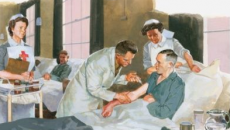Analytics
For the sake of connected care, it's time to stop thinking about interoperability as "an EHR feature" and start understanding it at the informatics level.
The explosion of big data has created a big market for clinical and business intelligence -- and means some big decisions for providers looking to make smart analytics purchases. A new report from KLAS weighs the merits of BI vendors large and small.
In what Health Catalyst CEO Dan Burton calls a groundbreaking deal, Minneapolis-based health system Allina Health -- Health Catalyst's first client -- will invest $100 million in the data warehousing company, committing to work with it on a 10-year initiative to build a new model for improving outcomes system-wide.
Most accountable care organizations have health information technology in place to improve quality and lower costs, but many say difficulties with interoperability are keeping them from reaching their potential.
Big data is bringing big changes to healthcare organizations of all shapes and sizes. Making the most of it will require providers to develop or hire new skill sets to compile a "cross-breed of expertise, wherein data scientists work in tandem with subject matter experts."
You want genomic analysis and big data to take off? Don't count on it until interoperability becomes more than just a plan tossed about in federal HIT policy meetings. It actually needs to come to fruition, said Cleveland Clinic's Chief Information Officer C. Martin Harris. Otherwise, healthcare innovation: Welcome to limbo.
Wes Wright, chief information officer at Seattle Children's Hospital, says a new analytics tool that unobtrusively monitors the performance of his HL7 transactions "gives me peace of mind."
The challenge for the Carolinas Healthcare System was to reduce the readmission rate for patients with chronic obstructive pulmonary disease. The solution: predictive analytics.
A new survey from the American Health Information Management Association finds that 95 percent of the more than a thousand healthcare industry professionals queried believe that "high-value information" is essential for improving patient safety and care quality.
Widespread use of advanced comparative effectiveness and large-scale monitoring may still be a bit far off. But they are on the horizon, and headway is being made.











3a81.jpg)











